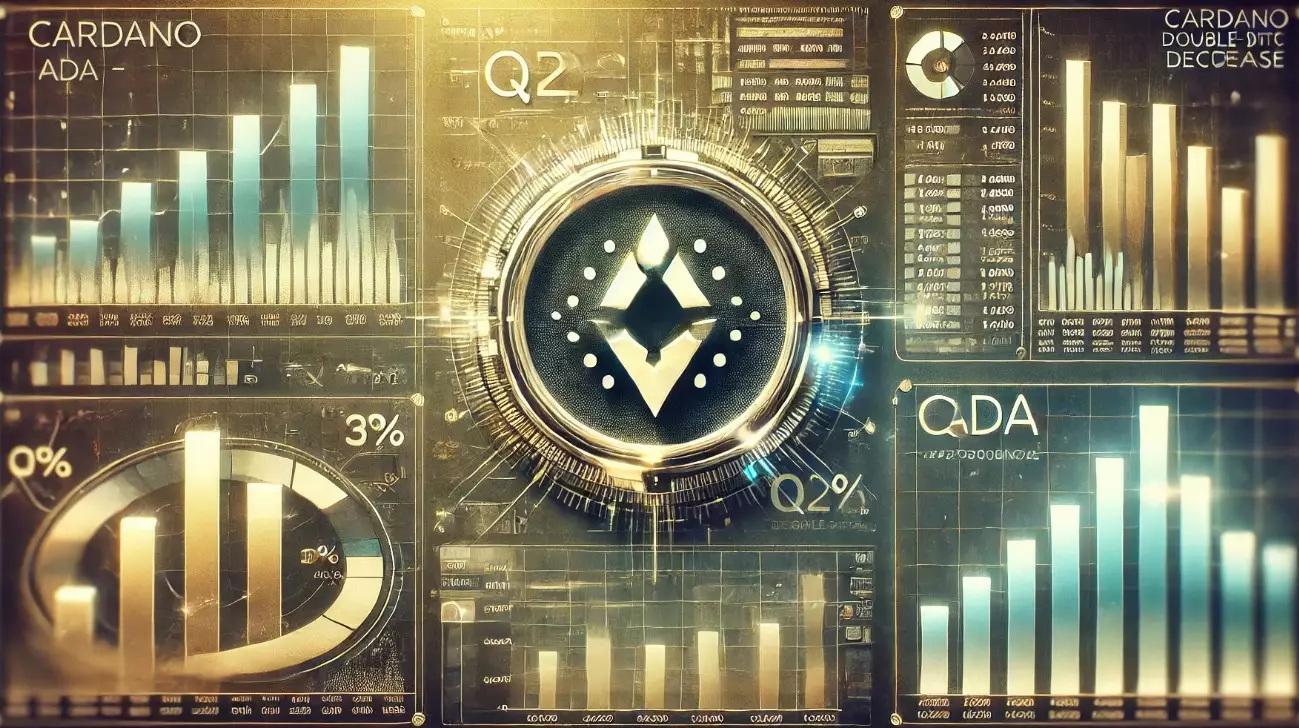Cardano and its native token, ADA, experienced a significant decline in the second quarter of 2024, as reported by Messari. The price of ADA plummeted by 39.7% to $0.39, while its market capitalization fell by 39.4% to $14 billion. This decline was partially attributed to an increase in circulating supply, leading to a drop in the market cap ranking from 9th to 10th place.
Transaction fees on the Cardano network also saw a decrease in the second quarter of 2024. Revenue in USD dropped by 44.3% to $0.74 million, and revenue measured in ADA fell by 28.0% to 1.60 million. Additionally, average daily transactions decreased by 27.5% to approximately 51,400, and the number of daily active addresses fell by 33.2% to 31,800. The average transaction fee in USD also dropped by 23.1%, reaching $0.16, while the average fee in ADA saw a marginal decline of 0.6% to 0.34.
In terms of staking metrics, total ADA staked and the staking rate increased slightly, but the total value of staked ADA in USD decreased by 39.6% to $8.9 billion due to the falling price of ADA. Decentralized application (DApp) activity on Cardano also saw declines, with average daily DApp transactions falling by 35.7% to 34,300. Average daily decentralized exchange (DEX) volume in USD also decreased by 42.5% to $4.2 million. Total value locked (TVL) on Cardano dropped by 41.2% to $219 million in the second quarter of 2024.
The stablecoin market cap on Cardano platform decreased by 12.4% to $19.6 million, while average daily non-fungible token (NFT) sales plummeted by 57.4% to under 730 transactions. Despite these challenges, ongoing developments within Cardano’s ecosystem such as the emergence of new stablecoins like USDM and MyUSD indicate a potential shift in the landscape.
Despite the setbacks faced by Cardano in Q2 of 2024, there are promising developments on the horizon. Upcoming upgrades like the Chang Hard Fork are expected to enhance Cardano’s governance capabilities, bringing the network closer to achieving its long-term goals of self-sustainability and participatory decision-making. The report also highlights the increase in market caps for new stablecoins, signaling potential growth in the ecosystem.
While Cardano experienced a notable decline in various metrics in the second quarter of 2024, there are signs of resilience and growth within its ecosystem. As the network continues to evolve and implement upgrades, the future of Cardano remains promising despite the challenges it currently faces.

